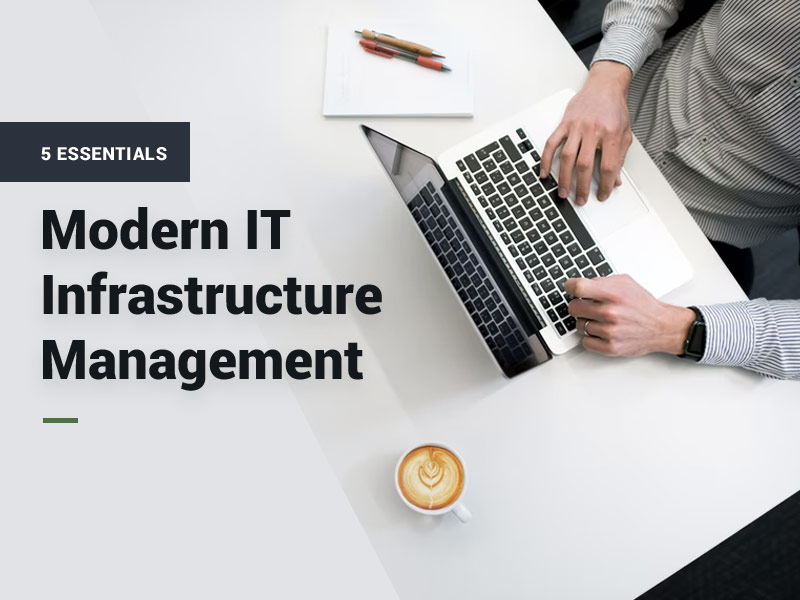We are often approached for it infrastructure management services and receive a lot of questions on this topic. Today we decided to write an article in which we will try to talk about 5 Essentials of Modern IT Infrastructure Management.
An organization’s IT infrastructure can be deployed in the cloud (IAAS, PAAS, SAAS) or locally (On-Premise). It can be managed by a team of outsourcers or in-house IT specialists. Be that as it may, any IT solutions should help the company develop and make a profit. If this does not happen, then the management of the company’s IT infrastructure should be adjusted. Today we will tell you how to do this and which model is better to use.
A few decades ago, IT departments were solely responsible for the technological reliability of processes in enterprises and companies. IT departments were treated as auxiliary. No one thought about how their work affects the activities of the enterprise as a whole.
Infrastructure was often formed spontaneously in response to business challenges. IT services had a complex and illogical structure, both technically and process-wise. This resulted in two main problems:
- with reporting: it was difficult to calculate service costs, draw up financial reports, maintain statistics and generate forecasts;
- with financial return: it was difficult to track whether investments in the development of IT structures of IT have an impact on the growth of the efficiency of the business itself.
Over time, it became obvious that in order for IT departments to help the business, all processes must be transparent. This requires effective management of the information infrastructure – with clear goals, objectives, roles and responsibilities.
Fortunately, some companies still managed to use effective strategies. It was necessary to comprehend and systematize their valuable experience, in order to then disseminate it to the masses. The first attempt to systematize successful experience was ITIL.
To implement ITSM in your organization, you need to complete several steps.
Stage 1. Make a system audit
Before making any modifications to the system, it is critical to assess its current status and its current state. An audit may assist here. The audit study’s goal is to inventory, identify problem areas and bottlenecks, and assess each element’s performance. Also, determine how the present system and design fulfill the organization’s requirements. The audit findings need a report on the status of all areas and conclusions.
Stage 2. Form a plan
After assessing the organization’s IT infrastructure, you may define objectives and development plans. At this level, a management concept and process needs must be defined. The idea should include the interests of the company, the technology, and the staff. The outcome will be a thorough plan that can be used to analyze resource investments in infrastructure and calculate their return. This is a challenging step, but without it, new management standards cannot be formed.
Stage 3. Implement Service Desk
At this stage, it is worth taking care of the interests of users. Do not put them in the background when upgrading the system. In some cases, for competent processing of requests from external customers, it is necessary to form a support service (Service Desk). This service will allow you to clearly regulate support processes, automatically process incoming requests, and evaluate end-user satisfaction.
Stage 4. Select monitoring tools
Regular monitoring helps maintain system health and track even minor changes. Monitoring may assist detect and avoid breakdowns in certain instances. The key monitoring tools are inventory (software and hardware accounting), regulatory compliance verification, and documentation analysis. You can utilize one or more tools. Reports must be created based on audit findings. They will guide choices on system upgrading.
Step 5: Maintain IT infrastructure management
If the management system is built and put on stream, all that remains is to properly maintain it: control the processes of planning, deployment and provision of IT services. So you will always be aware of events and be able to respond in time to problems that arise in the system.
If you need cloud computing architecture services – feel free to contact us! We are happy to help you and your business.







